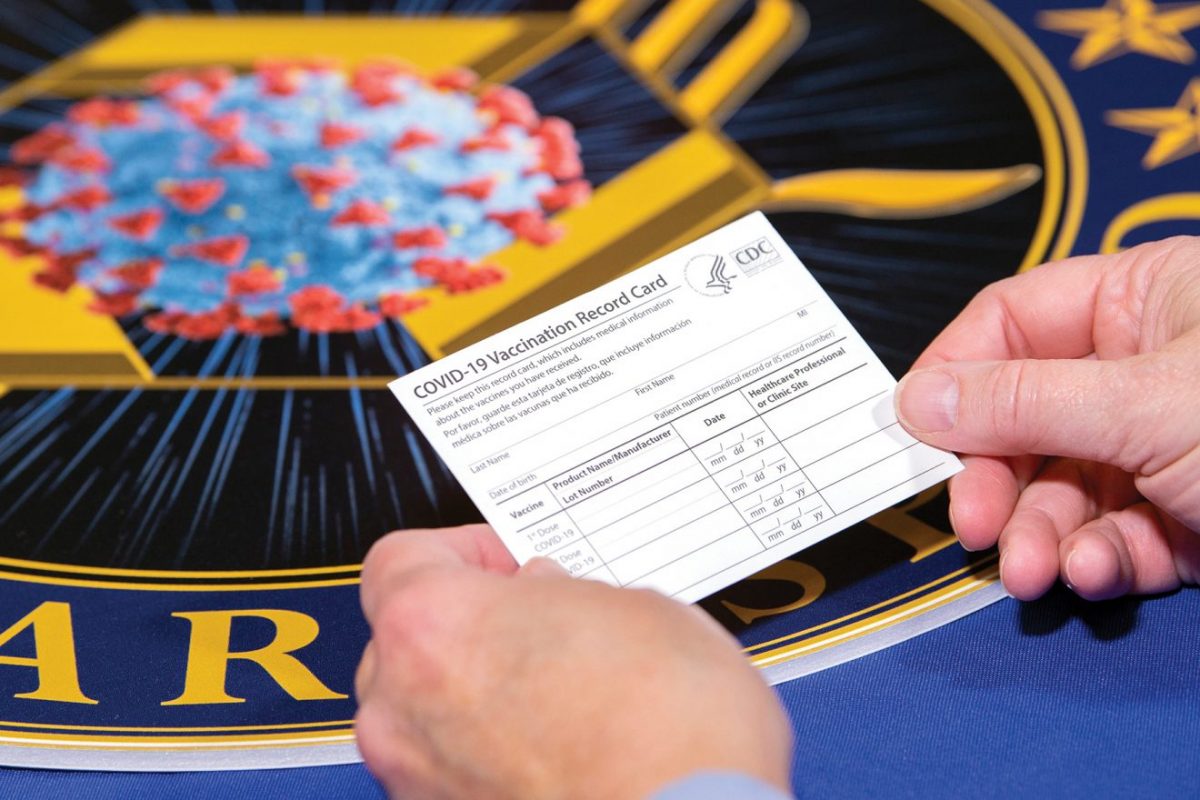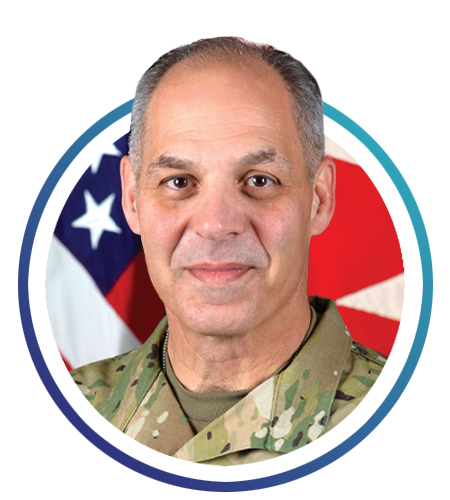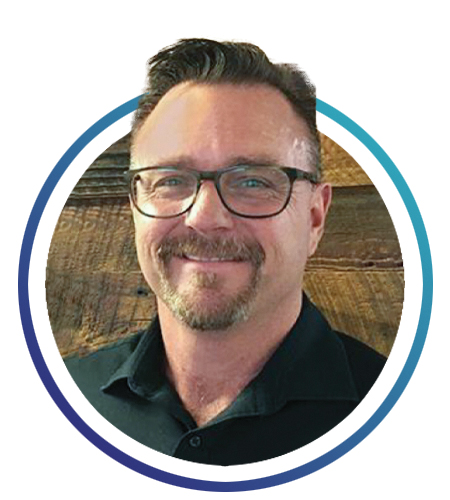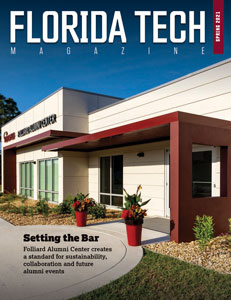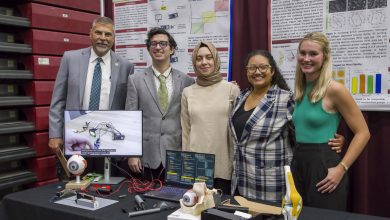Moving at Warp Speed
Florida Tech alumni are playing key roles in the United States’ COVID-19 vaccine rollout.
America started to feel the impact of the COVID-19 pandemic in March 2020. As the country worked to figure out how to deal with the virus and its implications, the Trump administration launched Operation Warp Speed (OWS) in May. The mission of this critical national program was to accelerate the development, manufacturing and distribution of COVID-19 vaccines, therapeutics and medical countermeasures. At the end of February 2021, Operation Warp Speed was transferred into the responsibilities of the White House COVID-19 Response Team.
Among its leaders, and in additional key roles, were three Florida Tech Panthers.
Gen. Gustave Perna ’92 M.S., the chief operating officer for the COVID-19 Vaccine and Therapeutics Operation; Col. Robert Mikesh ’07 M.S., information technology lead of the mission; and Darrell Rawlings ’05 M.S., vice president of pharmaceuticals for McKesson, the leading distributor of vaccines and project leader for the company’s COVID-19 vaccine program. We spoke with the alumni via email in March about the program and their work within it.

Gen. Gustave Perna ’92 M.S., chief operating officer for the COVID-19 Vaccine and Therapeutics Operation 
Col. Robert Mikesh ’07 M.S., information technology lead of the mission 
Darrell Rawlings ’05 M.S., McKesson vice president of pharmaceuticals
What are some of the daily tasks you are involved in?
Perna:
As chief operating officer, I co-lead the partnership between the Department of Health and Human Services and Department of Defense to accelerate the development, manufacturing and distribution of COVID-19 vaccines and therapeutics to the American people. I am responsible for providing unity of effort between the various federal and U.S. government agencies, industry and academia, and focusing the collective whole-of-America team on the ultimate goal of saving lives and moving our nation past this pandemic.
Mikesh:
My daily role is focused on coordinating across our government and industry partners to develop an interconnected information technology (IT) architecture that supports our mission to deliver safe and effective COVID-19 vaccines and therapeutics to 64 jurisdictions across the country. This level of IT architecture to support public health and immunization campaigns has been a complex challenge that has never been done before, involving over 100 disconnected information systems that need to connect to other systems or exchange data. This myriad of systems tracks everything from vaccine allocations to order processing, transportation, in-transit visibility and inventory to the administration data, which record the vaccination events.
This interconnected architecture allows us to “see ourselves” and track the vaccine from the manufacturing line to the point of vaccine administration with a shared goal: to get shots in arms as quickly and safely as possible. We first had to develop the architecture, and now that distribution has begun, we’re focused on maintenance and enhancements.
Rawlings:
As the vice president and enterprise program lead for McKesson’s COVID-19 vaccine program, I’m responsible for the overall program effectiveness related to our efforts to support the distribution of COVID-19 vaccines and related ancillary supplies in partnership with the U.S. government. In order to manage these duties, I’m fully embedded with the U.S. government’s COVID-19 operations team in Washington, D.C., to coordinate our company’s efforts in real time and enable better efficiency and collaboration between private and public partners.
Are there aspects of this work, or across your career in general, for which Florida Tech helped you prepare?
Perna:
I firmly believe in building from a foundation set from three key components: formal education, training and experience. All three are important to personal and professional development, and all three have contributed to any success I have had. The education I received as part of the master’s in logistics management program at Florida Institute of Technology expanded my knowledge and complemented my military training and experience. Formal education is an additional tool in your kit.
Mikesh:
Absolutely. My degree is in acquisition and contract management, and I apply those skills in this job and what I’ve done during my time in the U.S. Army. Since graduating in 2007, every job I’ve had has dealt with acquisition projects across the IT and contracting fields and is directly linked to what I learned at Florida Tech. In my current job with the COVID-19 Vaccine and Therapeutics Operation, I’ve been able to contribute a unique skill set in acquisition and contracting management that only about five of us on the team have.
Rawlings:
Yes. My master’s degree in logistics management has played an instrumental role in all the work I’ve accomplished while at McKesson and for this endeavor. More specifically, the COVID-19 vaccine program is a significant logistics challenge utilizing the resources of both industry and multiple branches of the government. The courses from Florida Tech prepared me to analyze, adapt and partner to find the best solutions possible. Additionally, I’ve also relied on the [vaccine] program, which allowed me to coordinate with military team members. That experience has helped me today better understand the discipline and approach often shared among those in the U.S. military that are deeply involved this effort. Ultimately, my time at Florida Tech, coupled with my years of experience at McKesson, have given me the opportunity to bring value to this effort to vaccinate all Americans.
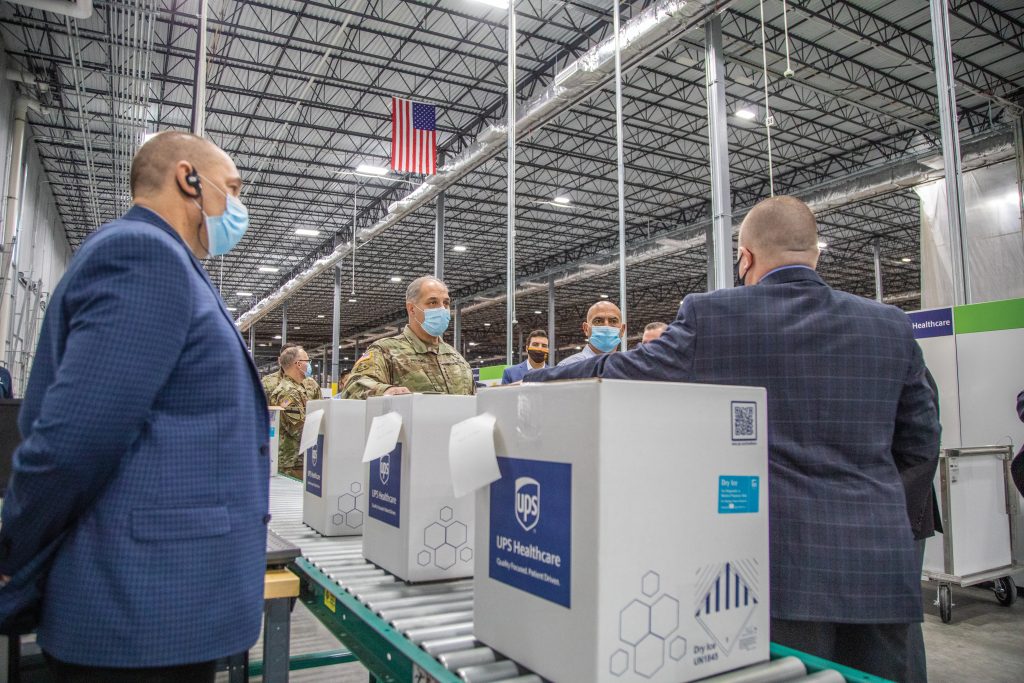
What have been some of the successes you’ve seen during Operation Warp Speed?
Perna:
While we have much work to do to ensure every American who wants a vaccine has access to one, I am incredibly proud of what this team has accomplished in less than a year.
Our research and development efforts led to the authorization of two safe and effective vaccines and three safe and effective therapeutics, with more likely to follow soon. We expanded the pharmaceutical manufacturing capacity in the U.S., in some cases, building new facilities from ground up, to be able to produce and fill/finish vaccines at a significantly higher rate than what previously existed. The team developed a new platform that draws data from hundreds of separate systems to provide full visibility of the vaccine operation—from supply and allocations through delivery to administration; no one federal data system existed a year ago. We organized, managed and staffed an inter- and intra-agency Vaccine Operations Center, with liaisons from multiple industry and government agencies, that coordinated and tracked the movement vaccines—facilitating all cold-chain requirements, including dry ice refills, when needed—from the manufacturer to distribution centers and finally to more than 30,000 administration sites.
By mid-February, these efforts—and so many more—led to more than 70 million doses of vaccine and 800,000 courses of treatments delivered at the right time, to the right location, in the right quantities and condition, through six winter storms, with a 99% success rate.
Rawlings:
The distribution of COVID-19 vaccines and ancillary supply kits needed to administer them has been meeting or exceeding expectations. Yet, we understand that Americans want more access to vaccines. As more doses become available, we are committed to getting them out as fast as possible. It is hard to claim true success until all those who want to receive a vaccine can get one—and that time is coming.
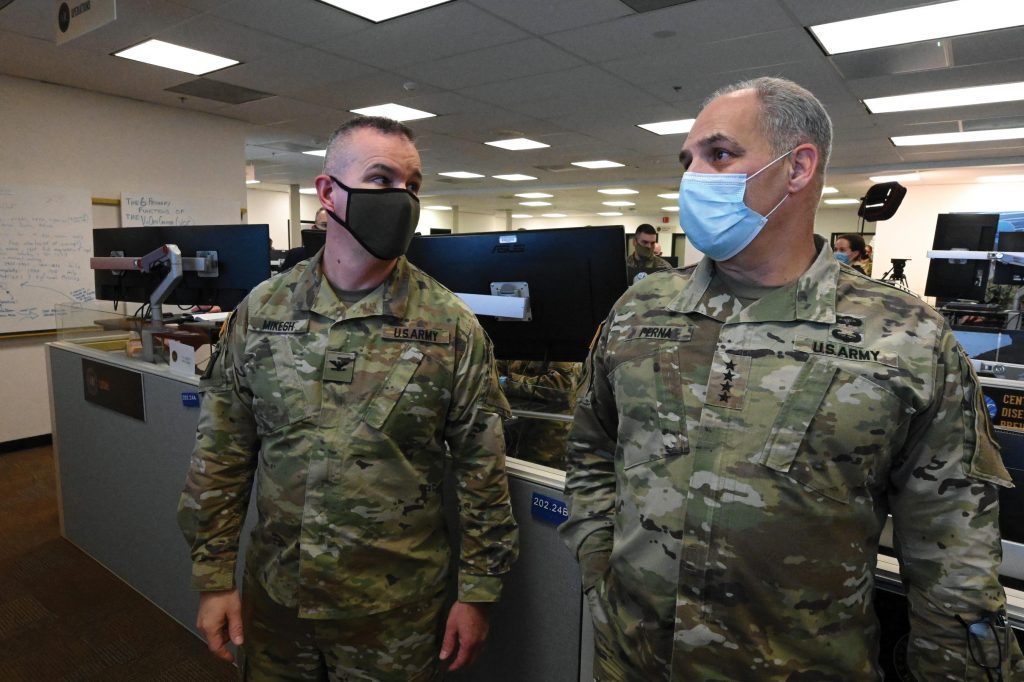
How has information technology factored into this mission?
Mikesh:
IT is absolutely critical to success of the campaign from an operations and leadership perspective. It’s through IT that we’re able to establish allocations, process orders, track shipments and monitor vaccine administration, or “shots in arms.” All of that amounts to a tremendous volume of data that our leaders use to make informed decisions with the help of data visualization tools. We’re dealing with nearly hundreds of millions of records every day that track the current average of 1.4 million daily vaccinations—and that number will only increase, especially as we approach 10 million doses shipped each week. It’s through cloud technology and the latest data platform innovations that we can enable these capabilities, connect numerous interagency and partner business systems, and process massive amounts of data that result in data-driven insights and decisions.
Could you talk about something you’ve learned as well as major challenges overcome during this rollout?
Perna:
Our nation has simply never done this before. We had never developed and brought to market a vaccine in less than a year. We had never manufactured hundreds of millions of doses in less than a year. And we had never distributed vaccines, with the added complexity of a two-dose regimen and with ultra-cold storage and handling requirements, at the scale and speed required during the pandemic.
We overcame these challenges through two key methods. First, we applied a whole-of-America approach, leveraging the unparalleled expertise of scientists and the healthcare community, Defense Department planning and logistics capability, American industrial ingenuity, and academic innovation. Essentially, we combined the world’s best scientists and doctors, working beside the world’s best military, with the support of American industry, and aligned them to a common goal. Second, we built from the existing healthcare expertise at the Centers for Disease Control and Prevention and capitalized on the existing health care infrastructure within industry. This allowed us to take tried-and-true processes and structures and adapt them to meet the needs of these new challenges.
Rawlings:
This project has been a good reminder to build the right team to get the job done. Experience, reliability and agility are all great qualities to have on your team. It was those traits that helped us navigate one of the worst winter storms in modern history that crippled the supply chain across the country. During severe winter weather in February 2021, McKesson held shipments to protect COVID-19 vaccines. Following the storm, McKesson shipped more than 7 million COVID-19 vaccine doses in a 48-hour time period to recover from the hold of shipments and meet new orders.
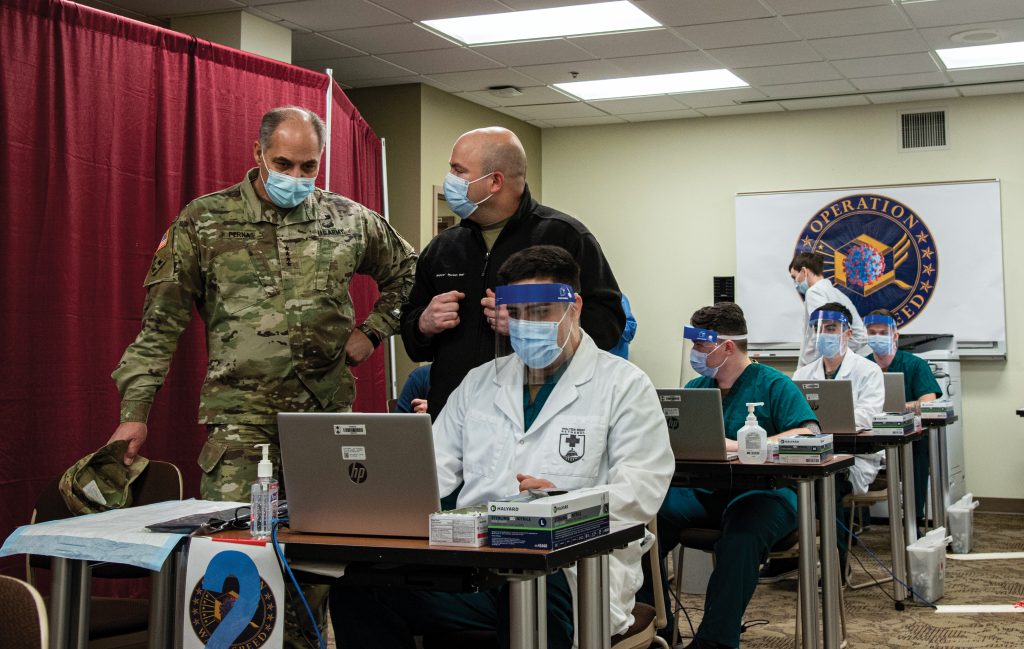
(U.S. Navy photo by Kurtis A. Hatcher)
What are some of the things you’ve learned during this process as COO?
Perna:
I have learned an incredible amount about our nation’s health care infrastructure and pharmaceutical industrial base, and I have developed a deep respect for the scientists and researchers who have paved the way for modern medicine. Having the opportunity to co-lead Operation Warp Speed with Dr. Moncef Slaoui, our chief science advisor, was one of the highlights of my career. He and his colleagues have some of the most brilliant minds in immunology, and without a doubt, without them, we would not have a vaccine today.
Also, while I have always appreciated the co-dependent relationship between the U.S. military and the defense-industrial base, I witnessed the power of public-private partnerships at a much larger scale through this operation. I am convinced that the successes we have had to date—developing and delivering tens of millions of safe and effective vaccines at a record pace—was only possible by bringing together the strengths of the U.S. government and private industry. Inter- and intra-agency coordination and collaboration can be incredibly powerful when we do not care who gets the credit and instead collectively focus on one common mission.
What is it like to work on Operation Warp Speed with fellow Florida Tech alumni?
Mikesh:
It’s an absolute honor to serve with Gen. Perna, and I’m fortunate that this is the second time I’ve worked with him. He inspires the entire team—and not just the military—across all of our government and industry partners. A fully honest and transparent leader, he’s a consummate professional who sets the example for all to follow through his word and deed. He listens to everyone’s opinions and input, and everyone on the team knows that he has your back. To date, nearly 70 million doses of vaccine and 800,000 courses of treatments have been delivered at the right time, to the right location, in the right quantities and condition with a 99% success rate. None of this would have been possible if it weren’t for his leadership.
Being able to work side-by-side with Darrell Rawlings is a testament and example of why this experience has been so unique. For background, the operation organized, managed and staffed a Vaccine Operations Center with liaisons from multiple industry and government agencies.
Darrell is our McKesson representative in the operation center working and coordinating alongside military, government and industry partners from the beginning. He’s been our central contact for McKesson, the heart of our distribution network and always an exceptional professional who gets the job done. It says a lot about industry that they’re willing to ‘deploy’ one of their own with the military and government for the better part of a year, working the long hours, seven days a week, to support this mission on behalf of the American people. I think it’s pretty incredible to have three Panthers working on this herculean mission … one that I will never forget.
It’s pretty incredible to have three Panthers working on this herculean mission … one that I will never forget.
Col. Robert Mikesh ’07 M.S.
This piece was featured in the spring 2021 edition of Florida Tech Magazine.

